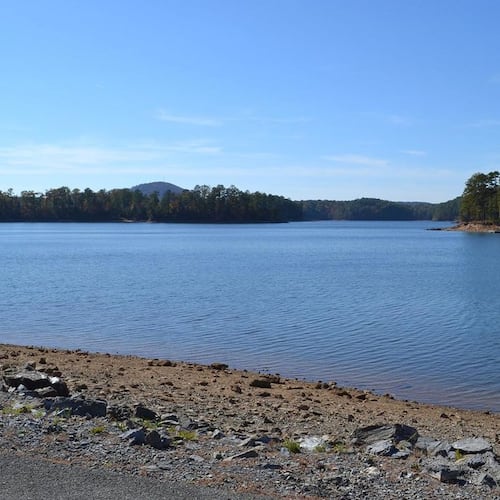WATER PROJECTS
A look at the four projects under development:
Indian Creek Reservoir
A 643-acre planned drinking water supply reservoir in Carroll County that involves expanding the storage of an existing flood control dam on Indian Creek in the Tallapoosa River Basin. It would eventually yield up to 18 million gallons per day and store 9 billion gallons of water.
Glades Reservoir
The Glades Reservoir in Hall County is an 850-acre planned drinking water supply reservoir that would provide 11.7 billion gallons of water storage in the Chattahoochee River Basin.
Richland Creek Reservoir
The Richland Creek Reservoir is a 305-acre planned drinking water supply reservoir in Paulding County that’s designed to yield 35 million gallons per day and store 3.43 billion gallons of water.
Desalination testing
A study of desalination techniques on the Cretaceous aquifer, which is several thousand feet below ground on Georgia’s coast. New membrane technologies make the water in the aquifer less costly to treat and more acceptable to drinking water quality standards.
Georgia's plan to help develop a string of reservoirs to boost its water supply is cascading forward even as the state's ongoing regional water dispute with its neighbors heats up.
Gov. Nathan Deal’s plan to spend about $45 million on water projects scattered across the state passed muster with state environmental authorities this month, and work could soon be underway. That’s on top of more than $130 million in loans to help boost water resources.
While the reservoirs are still years away from completion, neighboring states wary of losing access to upstream water are peeved by the projects. And water policy analysts say the spending is a misguided waste of taxpayer dollars. But Deal and his allies contend that growing Georgia’s water supply through the public financing of expanded reservoirs is the key to economic development.
“When I took office, I recognized we could not achieve growth in jobs in our state unless we had a key ingredient: water,” the governor said at the recent groundbreaking of a new reservoir in east Georgia, which is underway thanks to partial state financing.
The money, which comes from state bonds, authorizes about $40 million for a trio of lakes scattered across North Georgia that could give the state a bigger supply of water to send downstream during droughts and other times of need. A fourth project sets aside $5 million to study whether water from a deep aquifer off Georgia’s coast can be tapped.
“These four projects are the best, most strategic investments the state can make at this time to secure water supply in the right places and to tackle some of Georgia’s most significant water supply challenges,” said Kevin Clark, the head of the Georgia Environmental Finance Authority, which oversees the projects.
The plans are partly a response to the epic drought that spread like a dreaded inkblot across the region in the late 2000s and partly the state’s way of consolidating its resources amid an ongoing legal fight with Alabama and Florida over regional water rights.
The three new reservoir projects are scattered around North Georgia. State funding would help clear the way for the Glades project in Hall County, Indian Creek in Carroll County and Richland Creek in Paulding County. Deal said each reservoir “adds to our ability to grow” as a state.
The financing comes amid a broader water policy shift. Changes approved earlier this year to Deal’s water supply initiative give the state powers to tap into reservoirs and even wells built with state financing. That helps the state corral resources for the next water shortage.
These efforts have unnerved Georgia’s neighbors. Alabama officials have raised concerns that new reservoirs in Georgia threaten the water flow to downstream communities, and Florida revived a long-simmering legal battle in the U.S. Supreme Court, arguing that Georgia was already sucking up too much water that should have flowed south.
Water policy analysts see it as a wasteful program that only incites more conflict with downstream communities. April Ingle of the Georgia River Network, a water advocacy group, said the state would be better served by fixing and updating community water systems that have already been built, and called the planned reservoirs “unneeded pet projects.”
“The state has missed an important opportunity to invest in cost-effective, sustainable water supply projects that can also help downstream communities and waterways,” Ingle said.
About the Author
The Latest
Featured


